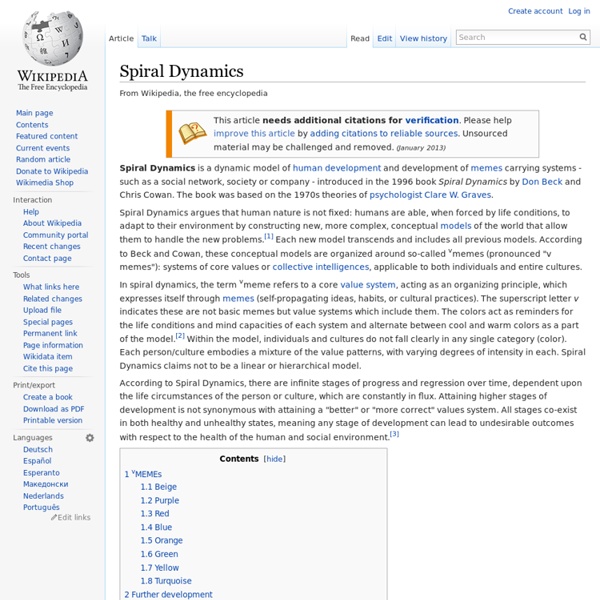Spiral Dynamics

Zła wielozadaniowość — Marek Kowalczyk
Zła wielozadaniowość to sytuacja, w której jednoczesna realizacja zbyt dużej ilości pracy (zadań, projektów, zleceń) prowadzi do wydłużenia czasu i obniżenia jakości — zamiast spodziewanego przyspieszenia. Obserwując spadające tempo pracy ludzie powiększają liczbę otwartych tematów, tym samym napędzając błędne koło złej wielozadaniowości. Niestety, szkodliwość złej wielozadaniowości nie jest powszechnie uznawana. Żadna z wiodących metod poprawy wyników nie poświęca jej należytej uwagi — z wyjątkiem teorii ograniczeń (theory of constraints) Goldratta. Usunięcie złej wielozadaniowości wymaga: Uświadomienia sobie jej destrukcyjnego wpływu zarówno na ilościowe i jakościowe wyniki organizacji, jak i relacje oraz na psychikę ludzi.Zmiany błędnych przekonań dotyczących funkcjonowania systemów (nabrania „wiedzy głębokiej”, by użyć sformułowania Deminga).Poznania praktycznych, możliwych do zastosowania „od poniedziałku” narzędzi ułatwiających wprowadzenie zmiany w życie. Czas wystąpienia Więcej...
Dzień spraw zaległych, czyli jak rozprawić się z "ogonem" w 5 krokach! - Catherine The Owner - Blog o przedsiębiorczym stylu życiaCatherine The Owner – Blog o przedsiębiorczym stylu życia
Jeśli czyta mnie ktokolwiek, kto nie ma żadnych zadań odkładanych na „wieczne jutro” to proszę koniecznie się do mnie odezwać! Człowieku, tyle pytań bym do Ciebie miała! Niestety (i dla mnie, i dla Was) taki ktoś najpewniej nie istnieje (albo istnieje, ale jest zbyt zajęty wykonywaniem zadań ze swojej listy, by czytać blogi) więc musimy sobie radzić sami. Jednym z bardziej irytujących problemów, które przeszkadzają mi w skupieniu są tak zwane NWdGZ (Nagle Wpadające do Głowy Zadania). Nie cierpię ich z dwóch powodów: raz, że mnie rozpraszają, a dwa, że psują mi humor – choćbym nie wiem jak zadowolona była z tego co robię w danej chwili albo z osiągnięcia sprzed godziny – takie zaległe zadanie, gdy wpada do głowy szepcze przy okazji „nie jesteś wcale taka fajna skoro jeszcze mnie nie załatwiłaś”! Jak sobie z takim gościem radzić? Krok 1 Jeśli takie zadanie właśnie wpadło Ci do głowy, od razu je z niej wyrzuć! Krok 2 Wyznacz specjalny dzień na realizację takich zadań. PS. Przeczytaj też:
Related:
Related:



